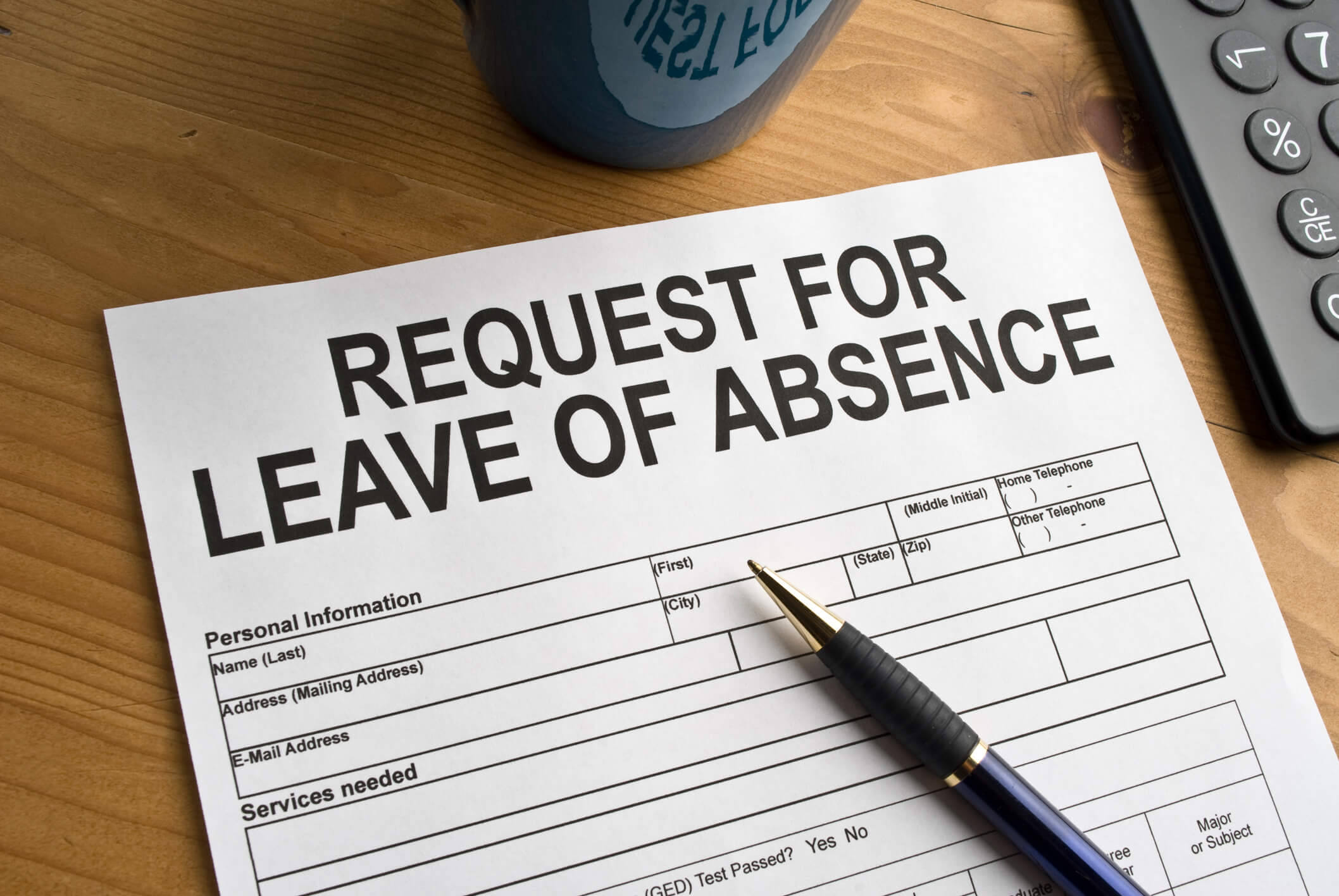Colorado employers may want to begin preparing for the implementation of Colorado’s new state-run Paid Family and Medical Leave Insurance (FAMLI) program. While Colorado voters approved Proposition 118 nearly two years ago, which set the path for implementation of the FAMLI program, employers and employees will not feel its effects until January 1, 2023. However, due to the impact FAMLI will have on the employment leave landscape, employers may want to begin educating themselves and their employees now on its requirements, as compliance will require cooperation across multiple departments.
FAMLI Leave: Amounts
FAMLI provides Colorado employees with twelve weeks of paid family and medical leave funded through a payroll tax paid half by employers and half by employees. Employees who take leave for pregnancy or childbirth complications may receive up to sixteen weeks of FAMLI leave.
The FAMLI program will operate similar to Colorado’s unemployment insurance program and will be run by the state through the newly created Division of Family and Medical Leave Insurance (FAMLI Division), within the Colorado Department of Labor and Employment (CDLE).
FAMLI Rulemaking
Since FAMLI’s enactment, the FAMLI Division has been drafting regulations that provide additional guidance on specific provisions of the act. Specifically, FAMLI rules related to premiums were finalized on January 1, 2022, followed by rules on local government participation on January 14, 2022. Most recently, rules related to benefits and employer participation were announced on August 26, 2022. The FAMLI Division also recently released proposed rules for private plans and is holding a public hearing on October 17, 2022, at 5:00 p.m., to review and address public comments on the proposed regulations. In addition, the FAMLI Division is holding a public hearing on November 1, 2022, at 5:00 p.m., on newly released amendments to the local government rules and premium rules, as well as proposed rules on coordination of benefits.
Coverage Requirements: Employers and Employees
All Colorado employers that employ at least one employee in Colorado or that paid wages of $1,500 during a calendar quarter must participate in the program by providing paid family and medical leave. However, employers with fewer than ten employees do not have to pay the employer share of the premiums. These employers must only collect the employee’s share of the premiums and ensure they are submitted to the state in accordance with the requirements of the act. When calculating the number of employees for purposes of determining whether the premium exemption applies, employers must count all employees companywide who were employed during twenty or more workweeks in the previous calendar year. The number of employees employed by an employer will not affect an individual’s right to FAMLI leave.
Employees are covered if they earn at least $2,500 in wages subject to premiums during the employee’s “base period.” “Base period” is defined as “the first four of the last five completed calendar quarters immediately preceding the first day of the individual’s benefit year.” C.R.S. § 8-70-103(2). Wages are calculated based on earnings from all current employers. Employees are also covered if they elect coverage and meet certain statutory requirements, including that they are self-employed or are employees of a local government.
Types of Covered Leave
Employees covered by FAMLI may use leave for the following reasons:
- to care for a child following birth adoption, or placement through foster care;
- to care for a family member with a serious health condition;
- to care for the employee’s own serious health condition;
- to take “qualifying exigency leave,” meaning the employee’s family member is in active duty military service or has notice of an impending call to active duty;
- to take “safe leave,” which includes time to obtain a civil protection order, receive medical or mental health care for themselves or a family member, secure their home from a perpetrator, or seek legal assistance for domestic violence, stalking, sexual assault, or abuse-related issues.
The term “family member” includes a child (whether biological, adopted, a stepchild, a child of a domestic partner, or a child to whom the individual stands in loco parentis), a parent, a person to whom the covered individual is legally married or a domestic partner, a grandparent, grandchild, or sibling of the covered individual or the covered individual’s spouse or domestic partner, and any other individual with whom the individual has a significant personal bond that is or is like a family relationship.
Applying for and Taking Leave
While on leave, employees may receive up to 90 percent of their average weekly wage for the portion of wages that totals up to 50 percent of the state average weekly wage or less. For the portion of employee wages that exceed 50 percent of the state average weekly wage, employees may only receive 50 percent of their average weekly wage. In 2024, the maximum weekly benefit is capped at $1,100. Thereafter, the maximum benefit amount will be capped at 90 percent of the state average weekly wage. An employee must be permitted to take leave in increments of one hour, but will not receive benefits under the act until the employee accumulates at least eight hours of FAMLI leave. Employees may take various forms of leave, including continuous leave, intermittent leave, or leave on a reduced schedule.
Employees have an obligation under the act to make a reasonable effort to schedule FAMLI leave so as not to unduly disrupt the operations of the employer. When the need for FAMLI leave is foreseeable, an employee must notify the employer thirty days before the date the leave is to begin. When the need for leave is not foreseeable or providing thirty days’ notice is not possible, the employee must provide notice as soon as practicable. Employers may require the notice to contain the anticipated start date, anticipated duration, and, when intermittent, the expected frequency of the leave.
Additionally, the employee may apply for leave with the FAMLI Division up to thirty days prior to the benefit start date. The FAMLI Division will notify the employer of the benefits application within five business days. When the need for leave is not foreseeable, or submitting an application prior to the start of leave is not practicable, employees may submit an application up to thirty days after leave has begun. If an employee submits an application more than thirty days but no more than ninety days after leave has begun, the employee must establish good cause for the delay. The regulations concerning benefits and employer participation requirements provide detailed guidance on how an employee may apply for leave and what documentation must be submitted to the division based on the reason for the leave.
The division will adjudicate a claim within two weeks after an application is properly filed and notify both the employer and employee of the determination. If the determination grants benefits, it will include the leave start date, leave duration, any denied segments of requested leave, and if applicable, a description of an approved reduced leave schedule or intermittent leave. An employer that has a good faith belief supported by evidence that the division has granted or paid benefits in a way that unduly disrupts the employer’s operations or in an amount, duration, or frequency beyond that which the employee is entitled, may file a grievance with the division. If the determination denies benefits, it will identify the reason for the denial, date of denial, and a description of the employee’s right to appeal.
Calculation and Payment of Premiums
While employees cannot begin taking FAMLI leave until January 1, 2024, employers must begin remitting premiums on January 1, 2023. From January 1, 2023, through the end of 2024, premiums will be 0.9 percent of the employee’s wage, with the employer and employee each paying 0.45 percent. Beginning in 2025, the director of the FAMLI Division will adjust the premium based on the total amount of premium contributions and the cost of administration during the prior year, up to a maximum of 1.2 percent of each employee’s wages. Employers may choose to pay a larger percentage of the premium, up to the full amount. Employers may not deduct more than the maximum allowable employee share of the premium from wages for a pay period.
An employee’s wages are subject to premiums if: (1) the employee’s entire service is performed in Colorado; or (2) the employee performs services inside and outside of Colorado but the services performed outside of the state are incidental to the work performed inside the state. Where the services are not localized in any one state, an employee’s wages may still be subject to premiums where they meet certain requirements laid out in the act.
Employers must have a process in place for collecting premiums and submitting them to the CDLE. Premiums will be due quarterly by the last day of the month immediately following the end of the quarter. The division will provide notice to employers of their expected premium on the first business day of the month the premium is due. In addition to the quarterly premiums, covered employers must also submit wage reports to the division. The division will use these reports, in part, to calculate an employee’s average weekly wage for purposes of determining an employee’s wage replacement benefit. Failure to timely submit wage reports may result in a $50 fine per employee whose wages were not reported.
Employers may calculate premiums on the premium and benefits calculator on the CDLE website.
May Employers Opt Out?
All private employers in Colorado with at least one employee are covered by the act and cannot opt out. However, employers that offer their own paid leave program, which is equal to or more generous than the benefits provided through FAMLI, may apply for an exemption. In order to obtain approval from the division, a private plan must provide all the same protections, rights, and benefits to employees as the act. Employers may begin applying for exemptions through the CDLE in November 2022, but must apply for an exemption no later than October 31, 2023, for a plan with an effective date of January 1, 2024. While the FAMLI Division has not yet released finalized rules for private plans, the recently proposed rules suggest that employers would be required to pay both the employer’s and employee’s share of premiums to the FAMLI Division beginning on January 1, 2023, pending the approval of the private plan. Once the plan is approved, the employer may submit for reimbursement so long as the plan’s effective date is no later than January 1, 2024.
Local governments may also opt out of FAMLI by submitting a written notice to the FAMLI Division following an affirmative vote by the local government’s governing body declining participation.
How Does This Affect Other Types of Leave?
FAMLI was enacted to supplement other forms of required leave under Colorado and federal law. Therefore, FAMLI will not replace other forms of leave an employee may be entitled to, including sick leave under the Healthy Families and Workplaces Act (HFWA). Because employees may take FAMLI leave in increments of as little as one hour, an employee may choose whether to use FAMLI leave or leave under the HFWA. An employer may not require employees to use accrued time off, including sick time or vacation, prior to receiving FAMLI. However, upon mutual agreement between the employer and employee, an employee may use any accrued vacation, sick, or other time off to supplement the employee’s pay to make the employee whole so long as the aggregate amount does not exceed the employee’s average weekly wage.
An employer may require FAMLI leave to run concurrently with leave under the Family and Medical Leave Act (FMLA) if such leave would qualify under both acts. For example, an employee taking FAMLI leave for “safe leave” purposes may not also qualify for FMLA leave, so such FAMLI leave could not concurrently deplete an employee’s FMLA balance. In contrast, an employee taking FAMLI leave for pregnancy complications would likely qualify for FMLA leave, so such FAMLI leave could be required to deplete an employee’s FMLA balance concurrently. An employer may also require FAMLI leave to run concurrently with a short or long-term disability policy if the employer provides written notice to its employees.
Employer Obligations While an Employee Is on FAMLI Leave
Unlike most other regulatory regimes related to leave, employees on FAMLI leave receive pay directly from the state, rather than their employer. However, this does not relieve employers of all obligations once an employee is on leave. Employers may not take disciplinary or retaliatory actions against employees who exercise their rights. Upon return from leave, employees must be returned to the same position or a position with the same pay, benefits, and status as they had prior to taking leave. While on FAMLI leave, employees must continue to receive their health benefits and are required to continue paying their portion of health insurance premiums.
All covered employers must register with the FAMLI Division via “MyFAMLI+Employer” by January 1, 2023. This platform, which is expected to launch in phases beginning in fall 2022, will allow employers to report wage data, remit premium payments, and apply for an exemption with a private plan.
Ogletree Deakins’ Denver office will continue to monitor and report on developments with respect to the FAMLI program and will post updates on the firm’s Colorado blog as additional information becomes available. Important information for employers is also available via the firm’s webinar and podcast programs.






